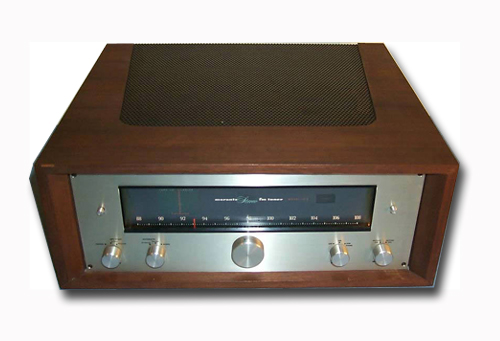|
You are reading the older HTML site
Positive Feedback
ISSUE
21
Final Notes - The Marantz 10B FM Tuner
and the Magnum Dynalab MD-108 Reference Tuners
The cables used with the Marantz 10B were the new Harmonic Technology Pro-Silway IIIs. I used them because they are heavily shielded and have only 22 pf of capacitance per foot—the lowest of any shielded cable I know. They sound very alive, and complement the 10B exquisitely. Kimber Select worked well with the other tuners in the comparison, but they did not enhance the sound of the 10B, possibly because of their high capacitance. The cables used on the Day-Sequerra and the MD 108 were balanced. Those on the Mac were single-ended. All tuners were five meters from the front end, and everything digital was turned off. Finishing first by a whisker was the newly refurbished Marantz 10B. It had a higher listenability quotient and was winningly detailed. It simply sounded more real, more of the time. Its midrange was top-of-the-heap—sophisticated and lush. The Marantz was not quite as quiet as the Magnum Dynalab or the Sequerra, though not disturbingly so. It mated beautifully with the half-wave indoor antenna, and yielded consistently involving musical performance. Coming in second, the MD 108 with NOS GE 5751s sounded smooth, silky, and highly defined. Dynamics were very good, and quietude was excellent. It was more detailed than the other tuners, but lacked the midrange texture and sophistication of the 10B. What it did have was definition, speed, and agility. Air and ambience were superb, and the soundstage was only a tiny bit less deep than the 10B’s. The GE tubes brought an honest musical balance to the MD 108’s sound. It still sparkled on cymbals and other percussion, but most of its former stridency was removed by replacing the stock tubes. This is the best tuner on the market today. I am searching for a pair of RCA black plate 12AX7s to try in the MD 108, and will report back with the results. Coming in third was the updated Day Sequerra Reference, which sounded excellent and musical. Its midrange was relaxed and smooth, and it was the best of all the tuners in dynamics. Its ambience retrieval was a bit less than that of the MD 108 or the 10B, but still excellent. Its faults included a slight dulling of the highs and a clean but slightly lean midrange when compared to the top two contenders. The leanness was not bothersome, but it was apparent. The Day Sequerra had superb solid-state sound, with silky definition and excellent pacing. Though its solid-state circuitry reduced textures, richness, and overall musicality, it never sounded dry or etched, and its listenability was top notch. It was a solid performer, and may be the best solid-state tuner ever. If memory serves, it was much better than the MD 102 I used to own. Its bass is trend setting, but I wish the rest of the frequency range was as superb. Coming in fourth, the McIntosh MR78, modified by Audio Classics, was a very good performer. It had fine definition and a big soundstage, and its sensitivity was excellent, but it lacked depth compared to the other three tuners and fell short in its ability to render fine musical textures in the mids and highs. It sounded a touch glassy, with some hardness creeping into the mids and highs on loud passages (and this was with Kimber Select copper cables, which always sound sweet and smooth). It was outclassed by the Day Sequerra’s more musical sound. Its older transistors reminded me of early digital. Current Magnum Dynalab solid-state designs are more musical than this. Though the class factor of the Mac is unmistakable, I would not pay a big premium for it.
|

